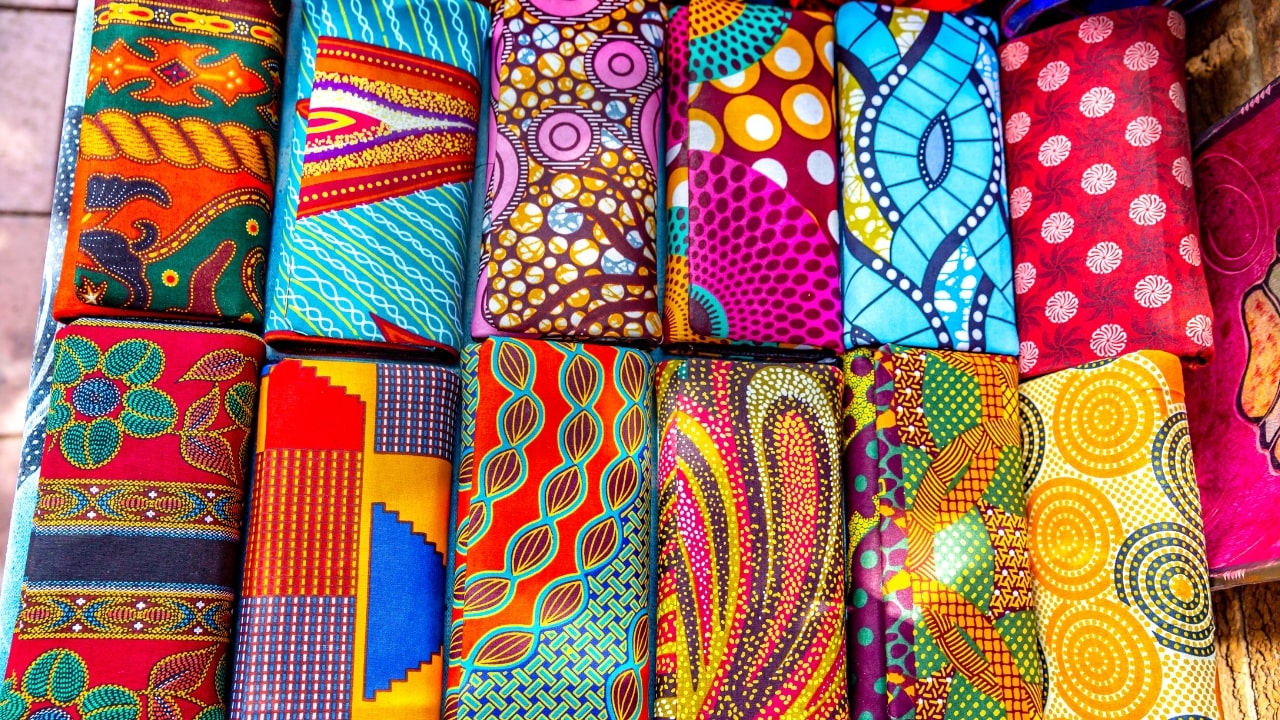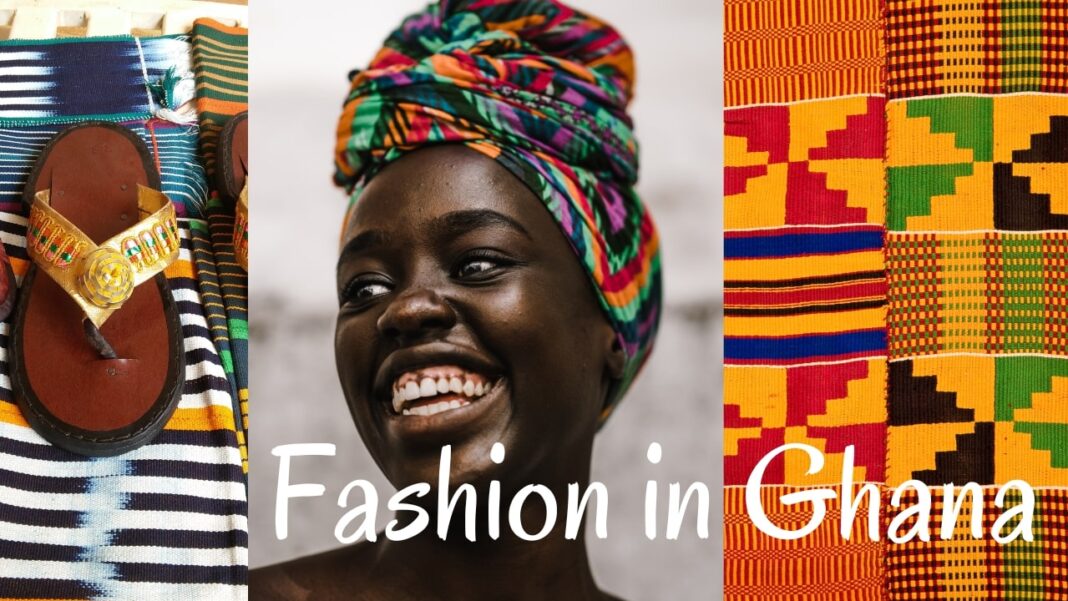Fashion in Ghana (Ghanaian Fashion Industry)
Fashion in Ghana is mostly based on textiles and clothing, therefore the sector is dominated by local artisans and designers who put a contemporary spin on Ghanaian traditional clothing like kente and fugu, as well as wax patterns. Ghana’s fashion industry faces challenges every day, but the country has become a fashion hub in West Africa, and many local designers have embraced the local fashion scene.As a result, Ghana has a chance to become a major player in the global fashion and textile industries, both as a manufacturer and a consumer.
The Evolution of Ghanaian Fashion
Ghanaian fashion has been influenced by foreign influence and the changing lifestyles of the people. Traditional clothes are still worn by the older generation, and the younger generation prefer western clothes. In recent years, foreign influence has had a major impact on Ghanaian fashion, and the local designers have responded to this by creating fashionable and stylish collections. Many people prefer to wear imported clothes and clothing from big selling brands. However, some traditional clothing styles are still in use.
The Ghanaian fashion industry is diverse and culturally rich. It developed even before Ghana gained independence in 1957, and has continued to flourish in the postcolonial period. Women have used fashion to challenge gendered forms of dress and make bold statements about their sexuality.
Fashion Designers in Ghana
There are several designers who are making fashion in Ghana that is both ethical and sustainable. Using eco-friendly processes, hand knitting, and other environmentally friendly methods, they create amazing stuff with little money and minimal resources. Fashion designers in Ghana have a strong connection to the country and its people. Despite the limited resources and publicity, they are still able to produce a great collection of clothing.
Ghanaian Fashion Styles

The traditional Ghanaian fashion styles are becoming more modern with the use of different textiles from other countries. They are not only comfortable and fashionable but give the wearer a high-class look. The latest Ghanaian fashion is also evolving and has more ethnic influences than ever. These designs have become more stylish and modern, and they are made by more experienced designers.
Ghanaian Fashion and Culture
The diversity of ethnic groups and cultures in Ghana has led to the creation of unique designs in Ghana. The diversity of the people has a profound impact on the quality of clothing in the country. The traditional kente and Gonja cloth are made by women from different parts of the country. Apart from their style, they also reflect the country’s culture. This culture is rich and diverse and the designs are distinctive. The fabric and the patterns used in the outfits are traditional and reflect the individuality of the people.
Fashion industry in Ghana
The fashion scene in Ghana has grown immensely in the last few decades. The number of local designers has increased. These designers continue to reinvent traditional fabrics and clothes. Aisha Ayensu, an African-born fashion designer, has established her own label, Christie Brown, which has become one of the most popular labels in the country.
Ankara fashion

Ankara fashion dates back to the early colonial period. It describes a wax-printed cotton textile, that is adorned with colorful and perseverative designs with mostly symbolic content. Initially sold as yardage, this fabric is then handled into one or several garments, which women and men wear as shirts or dresses. The word “kara” is derived from the Portuguese name of the capital of Ghana, Accra, in the 16th century.
This African print fabric makes for a beautiful dress, that is perfect for a variety of occasions. Its versatility is also what sets it apart from other fabrics and cuts. Many stylists have developed alterations that make these pieces fashionable and trendy. For example, the ankara fit and flare dress features a plunging V-neck and a two-tier asymmetric peplum.
Kente cloth in Ghana

Kente cloth is a traditional form of clothing in Ghana. The Akan people of Ghana make it, which includes the Asante, Fante, Nzema, and Bono. Other groups that make kente cloth include the Ewe of the Volta region of Ghana and the Anyin of Cote d’Ivoire. Kente cloth is also worn by other groups of people in Central Africa and the African diaspora. The word kente itself is derived from the Akan language, where it means “woven cloth.”
Today, kente cloth is one of the most popular and best known African textiles. It has gained popularity worldwide as a symbol of Afrocentricity and Pan-Africanism. In addition to its traditional use, the kente cloth also continues to play an important role in the Asante culture. The kente tradition, which originated in the Ashanti region of Ghana, is closely connected with the Asante Empire, which was based in Kumasi in southern Ghana.
The most characteristic feature of kente cloth is the pattern. There are over 300 patterns in total, each with a symbolic meaning. The fabric’s patterns are based on a background story and dedicated to a special event. For example, one pattern is dedicated to the wedding of the first president of Ghana, Nkrumah, and an Egyptian woman, Fathia. This marriage united different countries across Africa.
Gonja fabric

The Gonja fabric is a traditional style of clothing used in Ghana. Unlike the kente and dashiki, the Gonja is a hand-woven fabric. It is comfortable to wear and useful during hot summers. Traditionally, the Gonja cloth is made from cotton and is dyed with natural dyes. The traditional Gonja cloth is used by rural men for their clothing.
Gonja cloth is a blue fabric that is often used in Ghanaian fashion. The thick plaid shirt is known as Fugu or Batakari, and the fabrics are dyed a rich blue or green color. There are many variations of this fabric, but they all follow the same production pattern. The hem and cuts are distinctive and are embroidered. The clothing is worn with a matching cap. The distinctive patterns and cuts make it recognizable as a Ghanaian brand.
This fabric is unique to the northern region of Ghana. The area is traditionally marginalized and inhabited by myriad ethnic groups. Although these communities share common ancestors, foods, and cultural festivals, the Northern region is now gaining national attention for its smock fabric. The fabric is worn by many local and national figures, including President Jerry John Rawlings, who was well-known for wearing it.
Ghana Smock Wear (Fugu)

The smock is one of the most iconic clothing items in Ghana. It originated in Northern Ghana, a region historically marginalized by western society. This area is made up of many ethnic groups, that all share common ancestors, foods, and cultural festivals. The smock is an integral part of the Damba festival, which is now receiving national attention.
Traditional textiles are important to many Ghanaian societies, as they reflect their traditions, culture, and social customs. Throughout the study, selected smock types were examined to understand their significance in society. Northerners have incorporated geometric shapes and designs into smocks as a means of expressing their worldview. Some people have even used these designs to express their religious beliefs or motifs. This research has revealed an underlying theme within the smock.
Men Fashion in Ghana

Most men in Ghana wear a plaid shirt called a smock, which is quite similar to the dashiki.
This type of tradional clothing is mostly popular in the northen part of Ghana. Men in Ghana also frequently put on kaftans. Men from all three major southern Ghanaian ethnic groups—the Akan, the Ga, and the Ewe—wear kente, the traditional or national cloth of Ghana. Kente is often worn for important events and occasions.
Read also: 10 Most Fashionable Male Celebrities in Ghana
Women Fashion in Ghana

Ghanaian women wear Kente, and Kaba and slit. Kaba is the term Ghanaians refer to African print shirts. Blouses in the kaba style are typically worn with slitted, floor-length skirts in Ghana.
Ghanaian fashion has seen many changes, but Kaba styles have always remained. There are no limits to what women in Ghana can wear, so you’ll see them dressed in both traditional and Western styles.
Ghana traditional jewelry (Ghanaian Beads)

Ghana makes Traditional Jewellery bracelets, necklaces and other body accessories from local beads. Ghanaian beads have a long and rich history, dating back to when they were used as the King’s currency for the purchase and sale of goods including slaves, textiles, and even alcoholic beverages.
Ghana Traditional Slipers (Ahenema)

The Akan, Ga, and Ewe royal families of Ghana all wear a traditional slipper called an ahenema.
In more recent times, this traditional slipper has become acceptable attire for every occasion, including festivals, funerals, weddings, and even church. Historically, only persons with royal blood wore Ahenema.
Ghana Duku (Head wrap)

In Ghana the head wrap is called a ‘duku’, which is very similar to the West African ‘gele’. A woman’s ‘duku,’ however she chooses to wear it, always makes an impression. Duku is worn by women only in Ghana.
Summary
The textiles used in Ghana are still handmade. The fashion of Ghana is very different from the style of the United States and other parts of the world. The clothing style in Ghana is a reflection of its history and people’s pride. Aside from traditional clothing, there is also a variety of unique and beautiful traditional crafts in the country. Whether you are looking for a modern, urban, or rural life, Ghanaian fashion has something to offer you.



